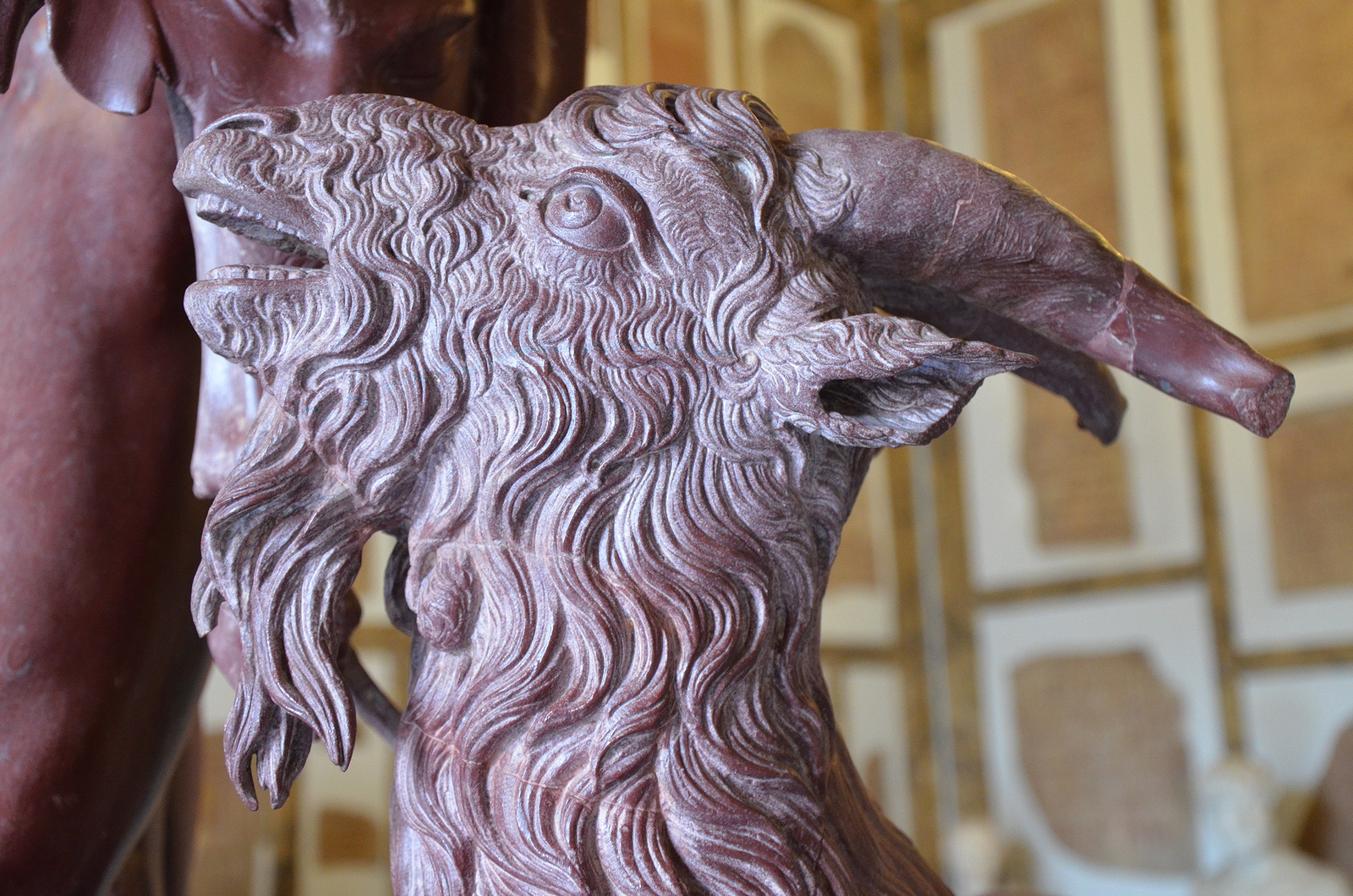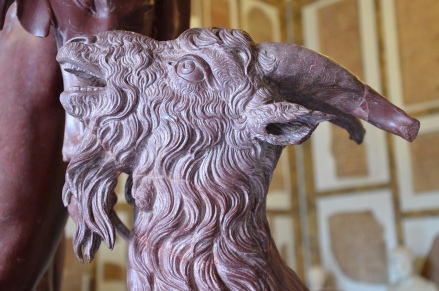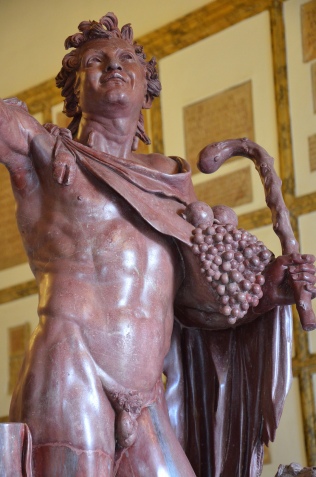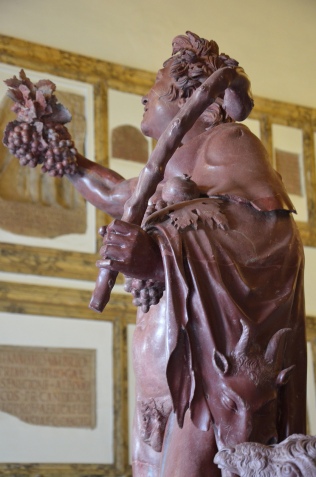This week’s sculpture from Hadrian’s Villa is a red-marble statue of a satyr, the so-called “Fauno rosso” (red faun).
The Fauno rosso depicts a satyr, follower of Dionysus, the god of wine. He is depicted entirely nude apart from a nebris (faun skin) knotted on the right shoulder and hanging down over his left shoulder. The satyr raises his right arm and holds a cluster of grapes, symbols of harvest. He also carries a large pedum (shepherd’s crook) in his left hand, another common piece of iconography associated with satyrs. The empty eye sockets were probably filled with glass or hard stones.

The so-called Fauno rosso, a statue in red-marble depicting a drunken satyr, Hadrianic copy of a Greek original from the late Hellenistic, from Hadrian’s Villa, Palazzo Nuovo, Capitoline Museums. Photo © Carole Raddato.
To the left of the satyr is a goat that looks up at him and rests one leg on a wicker basket.
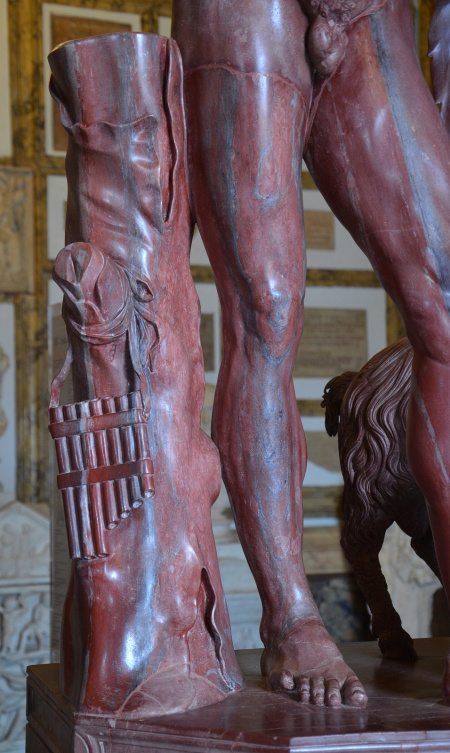
Detail of the “Fauno rosso”, a red-marble statue depicting a drunken satyr, Hadrianic copy of a Greek original from the late Hellenistic, from Hadrian’s Villa, Palazzo Nuovo, Capitoline Museums. Photo © Carole Raddato.
To the satyr’s right is a supporting trunk with a shepherd’s pipe hanging from it.
The statue is believed to be a Roman copy of a late Hellenistic Greek original, probably in bronze. It was commissioned by Hadrian himself and was most likely sculpted by Aristeas and Papias of Aphrodisias in Asia Minor (they signed two other sculptures found at the Villa, the “Furietti Centaurs“). The figure is made of an ancient red marble from Laconia, a region in the Peloponnese in Greece, suggesting that the satyr is so drunk that his skin has turned into the color of the grapes.
This statue was found in fragments in 1736 in an area of the Villa called the Academy by Giuseppe Furietti, an antiquarian who obtained rights to excavate at the Villa. Pope Benedict XIV Lambertini gave the sculpture to the Capitoline Museum in 1746 where it has been on public display ever since. The fragmentary statue was restored in 1751 by the Italian sculptors Bartolomeo Cavaceppi and Clemente Bianchi. They added many pieces of rosso granato marble (arms, legs, the base, the trunk with the shepherd’s pipe, the goat and the basket), characterized by greyish veins.
